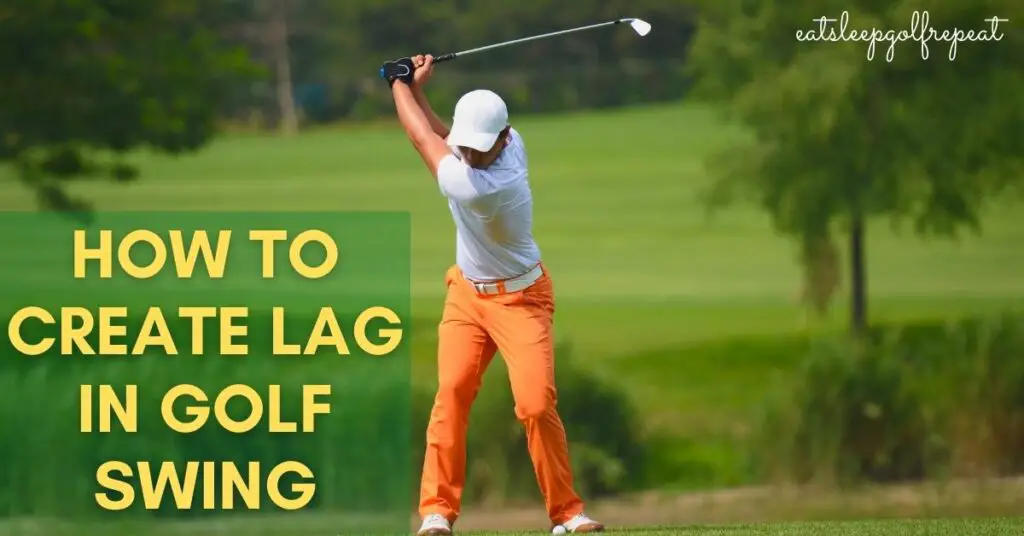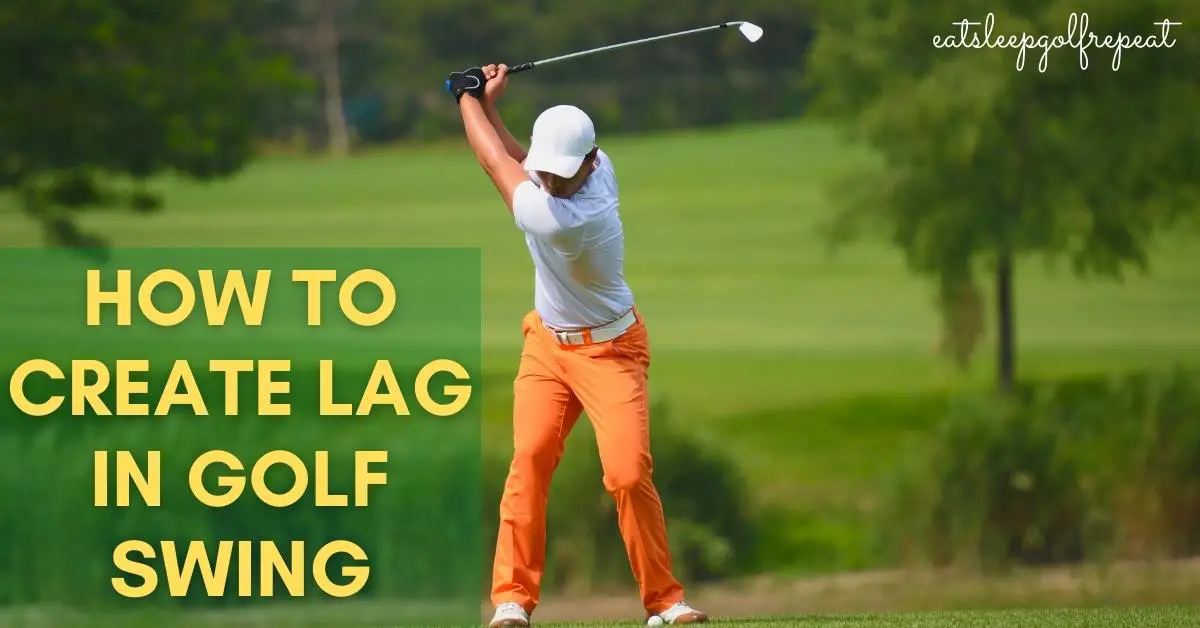
How To Create Lag In Golf Swing
If you want to get a good amount of distance on your ball then it all starts with your swing.
You’ve probably heard a thousand and one tips on improving distance but when it comes down to it, lag is one of the best things you can do.
But what is it and how do you create it?
In the most simple terms, lag is the angle of the club as it moves through the downswing.
If you lose lag during the downswing then this means that right angle has been lost too quickly and as a result, you lose distance.
Not a lot of golfers fully understand the importance of lag, and definitely struggle to understand how to create it.
But in this guide, we want to give you some simple instructions that will help you create better lag in your golf swing and ultimately become a better player.
Why Is Lag So Important?
When we talk about lag, we are referring to the clubhead literally lagging behind the hands and arms.
This is achieved by maintaining an angle between your leading arm and the shaft at the same time as beginning the downswing using the movement of your lower body.
Doing this creates a much greater swing speed since the clubhead is allowed to come to the bottom of the swing arc at just the right time.
In turn, you’ll get far more consistent striking of the ball and of course, this translates into greater distance.
If you’re looking to be the best player you can be, working on creating lag is one of the more important aspects of perfecting your swing.
As if it wasn’t technical enough already!
Understanding Lag
The issue with lag is that a lot of golfers simply don’t know how to make it happen, despite giving it all the talk in the clubhouse.
One of the world’s leading golfers Sergio Garcia is known for his ability to create the perfect lag but even he isn’t entirely sure how he manages this.
In interviews, he has been heard saying that when he creates lag, it almost feels as though he is pulling on a chain and while this is a viable way of describing it, it’s not totally accurate in terms of what’s going on during the downswing.
Lag is not about holding off releasing the clubhead but instead starting the downswing using the lower body as this provides the golfer with a much more free-flowing swing.
As a result of this, you can move seamlessly from the backswing to the downswing while keeping your hips and legs before your arms, as well as your hands and importantly, the club. When you do this, you will feel a pull, which is what Garcia describes but it’s important not to mistake this for a need to pull down, because this won’t have the same effect.
In fact, when done correctly, creating lag will see the arms doing very little other than dropping down as you move through the swing and change directions.
The left arm must stay on the torso as you take the downswing and if you can perfect that, then you’re on the way to creating perfect lag every time.
You’ll just need to make sure that your lower body makes the first move and this will translate into the upper limbs remaining far more relaxed.
During this seamless movement, the lower body unwinds towards where you want the ball to go and in the end, your club will catch up and move past your body before impacting the ball.
The key here is that the club doesn’t pass your body until much closer to the point of impact. The closer you can get this to happen, the more you will compress the golf ball.
This can happen even if you haven’t used the sweet spot on the club face because of the high amount of energy going into the shot!
I once read an article about lag that attempted to describe it in the same way as painting.
Yes, I know, golf and painting are vastly different hobbies but when you think about how the brush moves over the canvas or paper, there is a degree of lag.
As you move the brush across the surface, the bristles don’t move with your hand, they lag slightly behind and this is a very similar concept to what we are trying to achieve here.
How To Create Lag
Now, we have discussed the importance of lag but it is also essential to keep in mind that you don’t want to overthink it.
Doing this will take your mind away from the other important aspects of your swing.
Of course, you will need to practice but in the end, it all comes down to the way you move your body.
When you’ve got it just right, you’ll notice that your swing speed improves and your distance is greater.
One of the biggest problems is that amateur golfers often find it very difficult to generate lag especially when compared to their tour player counterparts who seem to be able to lag with great ease. You can also use a swing trainer which can help.
But if you’re serious about lag then you will need to identify what is holding you back and alter your swing accordingly.
Below, I will discuss some of the most common issues.
Casting
A caster is someone who doesn’t have much lag in their swing and it is the result of releasing that angle too early in the backswing.
There are a couple of reasons that this might be happening to you.
For starters, it could be that you have a problem with slicing and casting too early may cause you to feel as though you have squared the clubface.
When this happens, your lag is seriously affected and this, in turn, affects your distance. Not to mention that there are a plethora of other problems that can come off the back of this.
Early casting can also be a problem for people who sway, in short, when you move your body too much in front of your ball before you impact it and this makes the club come into contact with the ground further forward than it should.
When working on lag, it can be tempting to throw it away in order to counteract this problem so this is something you will need to work on.
If you don’t then all the usual things will be affected and you will find it very difficult to remain consistent.
Sequencing
The sequence of your swing is hugely important if you want to perfect it and get that all-important lag.
This starts from the ground and sees the body unwinding upwards.
The legs and hips should rotate at the beginning of the downswing, almost initiating it but the club should feel as though it is staying in place.
After this, the upper body can begin to move and this will cause your arms to fall naturally into the right position.
This allows you to create lag in the most efficient way possible.
It’ll take a while to move through the sequence smoothly but over time, you will notice that it becomes effortless and your swing becomes far more powerful.
Hand Placement
If you have tried the above tips and are still finding that there is not enough lag in your downswing then the problem could be related to the placement of your hands.
The best way to do this is to look at how easily you are able to maintain the angle between the left forearm and your club shaft as you move through the downswing.
Now work on separating the hands.
You can put your left hand on your club where you normally would but keep the right hand at least halfway down.
Now practice moving through your downswing, focusing on keeping that right elbow close in to the side of the body.
You’ll benefit from practicing this multiple times, so don’t rush through it.
You’ll soon begin to see and feel what the right angle is and how best to maintain it.
Conclusion
Lad simply refers to the clubhead moving behind the rest of the body during the downswing before moving past to impact the ball.
This means that you are able to produce more speed and power and ultimately, more distance.
While many golfers struggle to create lag, there are a few things you can do to practice but it takes time and patience, so be willing to dedicate the time to this.

